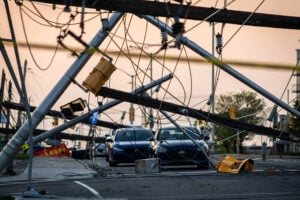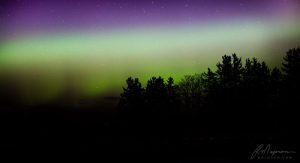
Science & Tech
The groundbreaking program that helped make Canada an Arctic science heavyweight
In the face of climate change, the government’s long-running Northern Scientific Training Program has never been more crucial
- 673 words
- 3 minutes
This article is over 5 years old and may contain outdated information.
Science & Tech

Permafrost, the frozen ground that underlies Canada’s Arctic, is rock-solid — as long as it stays frozen. But with a warming climate that icy layer is changing, which can spell trouble for infrastructure built on permafrost, including airport runways. Canada’s remote Arctic communities depend on aircraft for essential services, from resupply of fresh food to emergency transport to hospital.
Michel Allard, a geographer at Laval University, studies the effects of changing permafrost on runways in Nunavik (Arctic Quebec) and Nunavut, and works with civil engineers to adapt them to climate change.
The uppermost layer of permafrost, known as the active layer, melts in summer. When this happens under a runway, its surface settles or cracks, requiring expensive repairs. Increasingly warm seasonal temperatures are causing the active layer to deepen, which brings more headaches for airport managers.
The first step in protecting a runway from permafrost melt is to understand local conditions. Allard and his team take core samples to measure the amount of ice in the ground and its sensitivity to temperature change — fine-textured soils, for instance, tend to collapse when they thaw. The researchers gauge the depth of the summer thaw and map how water drains and flows around the runway in summer. Then they devise a plan to protect the runway from thawing.
“The goal is to keep the permafrost cold,” says Allard. “We use a mixture of methods precisely fitted to local conditions.” These include, he explains, installing ventilation conduits and heat drains (membranes with hundreds of tiny air conduits inside), which allow air to circulate, keeping the temperature down like open windows in a house on a hot day. Drainage is modified so water is diverted away, because it transports heat and erodes soil and permafrost, and runway embankments are given a gentle slope so the wind can blow the snow away, which could otherwise accumulate and act as an insulator, trapping heat in the ground.
So far, Allard and his team have made modifications at six Nunavik airports and are now working on the runway at the international airport in Iqaluit — built during the Second World War with no thought given to permafrost — which is being completely renovated. “In Canada, our Arctic runways have always been well-maintained,” says Allard. “They’re reliable and they’re safe. We’re adapting them to the permafrost changes occurring now — and the ones we expect in the future — to make sure they stay that way.”


Are you passionate about Canadian geography?
You can support Canadian Geographic in 3 ways:

Science & Tech
In the face of climate change, the government’s long-running Northern Scientific Training Program has never been more crucial

Science & Tech
From Roberta Bondar to Harriet Brooks, Canada has more than its fair share of women scientists to be proud of. However women are still a minority in the STEM fields

Environment
Tracking the country’s extreme weather events to answer the question: are storms getting worse?

People & Culture
This photog lives in southern Ontario, but still gets amazing photos of the northern lights. Here’s how.